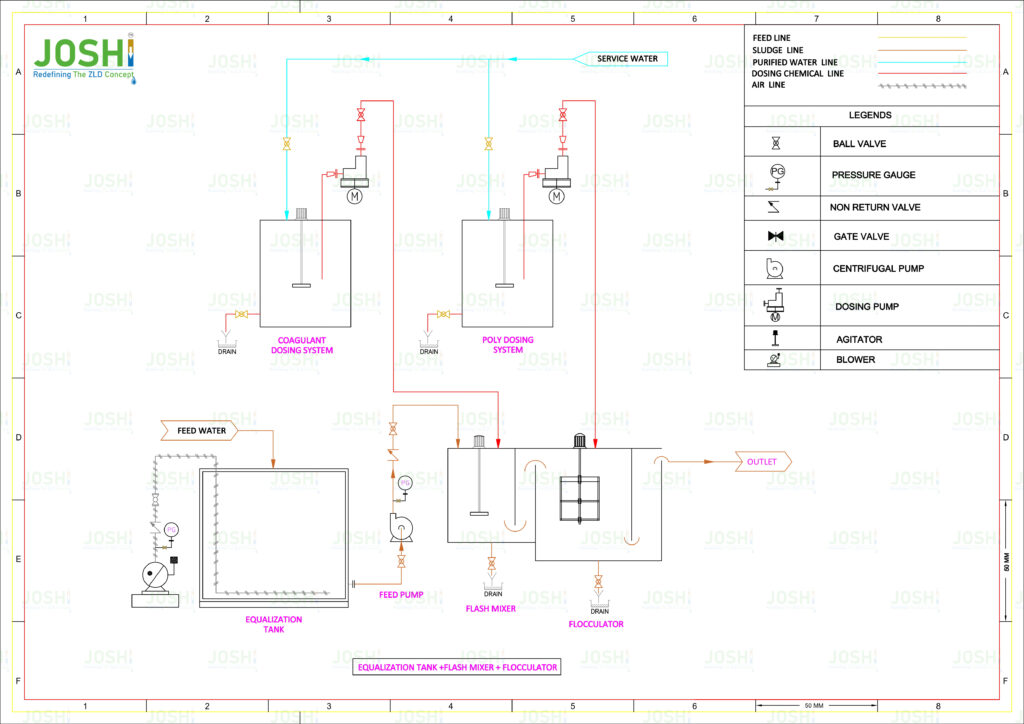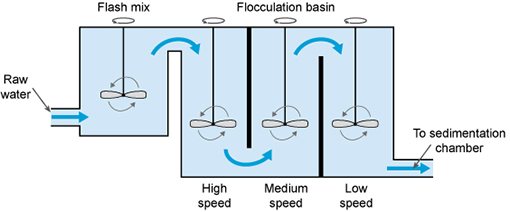Flocculation
Flocculation is a process that follows coagulation in water treatment, where gentle stirring or mixing is applie to encourage the formation of larger and heavier particles call flocs. Flocculation helps in the further aggregation and settling of suspend particles, improving the efficiency of sedimentation or filtration processes in water treatment.

Process Mechanism
After the addition of coagulants during the coagulation process, the water contains small flocs that are formed by the neutralization of charges on suspend particles. These flocs are not yet large or heavy enough to settle effectively. Flocculation aims to promote the collision and adhesion of these smaller flocs, allowing them to grow in size and settle more readily
Process Description
During the flocculation process, slow and controlled mixing is applied to the water. The mixing can be achieve by various means, such as mechanical paddles, hydraulic mixing, or natural sedimentation basins with gentle inflow. The purpose of this mixing is to provide enough contact and collision opportunities between the flocs, allowing them to come together and form larger aggregates.
As the mixing continues, the flocs collide, adhere to each other, and grow in size. The process is facilitat by the presence of polymers, known as flocculants, which are often added during flocculation to enhance particle aggregation. Flocculants are long-chain polymers that help in bridging the flocs and promoting their sticking together.
The resulting larger flocs settle more easily during the subsequent sedimentation or filtration processes. They can be separate from the water more efficiently, leading to improved water clarity and removal of particulate matter

Significance & Advantages
Enhanced Settling : By promoting the growth of flocs, flocculation improves the settling characteristics of suspend particles, allowing them to settle faster and more effectively during sedimentation.
Improved Filtration : Larger flocs are easier to remove during filtration processes, reducing the load on filters and increasing their efficiency.
Particle Removal : Flocculation helps in the removal of fine suspend particles, colloids, and other substances that may not have been completely removed during coagulation.
Increased Water Clarity : The process of flocculation improves the visual appearance of water by reducing turbidity and removing smaller particles that contribute to cloudiness.
It is important to note that the optimal flocculation conditions, including mixing intensity, time, and dosing of flocculants, may vary depending on the specific characteristics of the water being treat. Proper monitoring and control of the flocculation process are necessary to achieve the desire treatment goals.
Targeted Impurities
- suspend solids
- colloidal particles
- turbidity
- algae
- certain dissolved organic compounds
- heavy metals
- pathogens
- microorganisms




